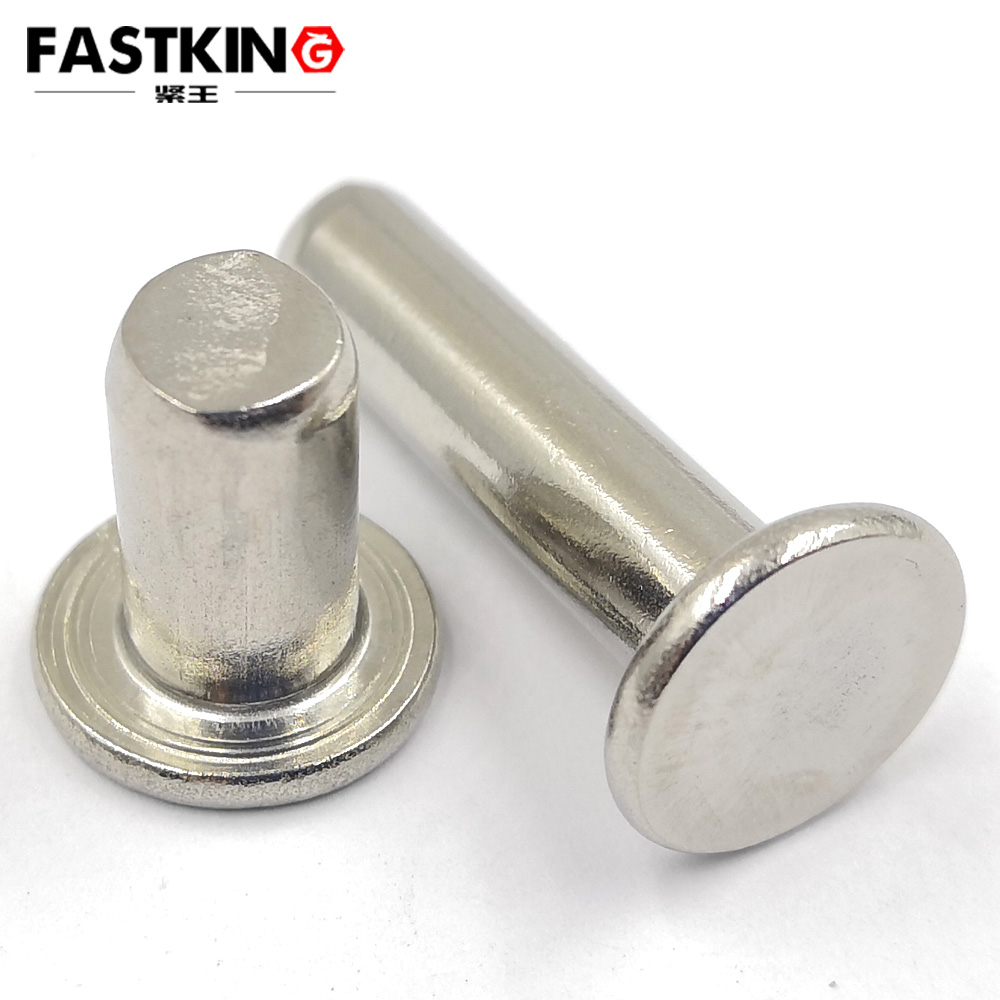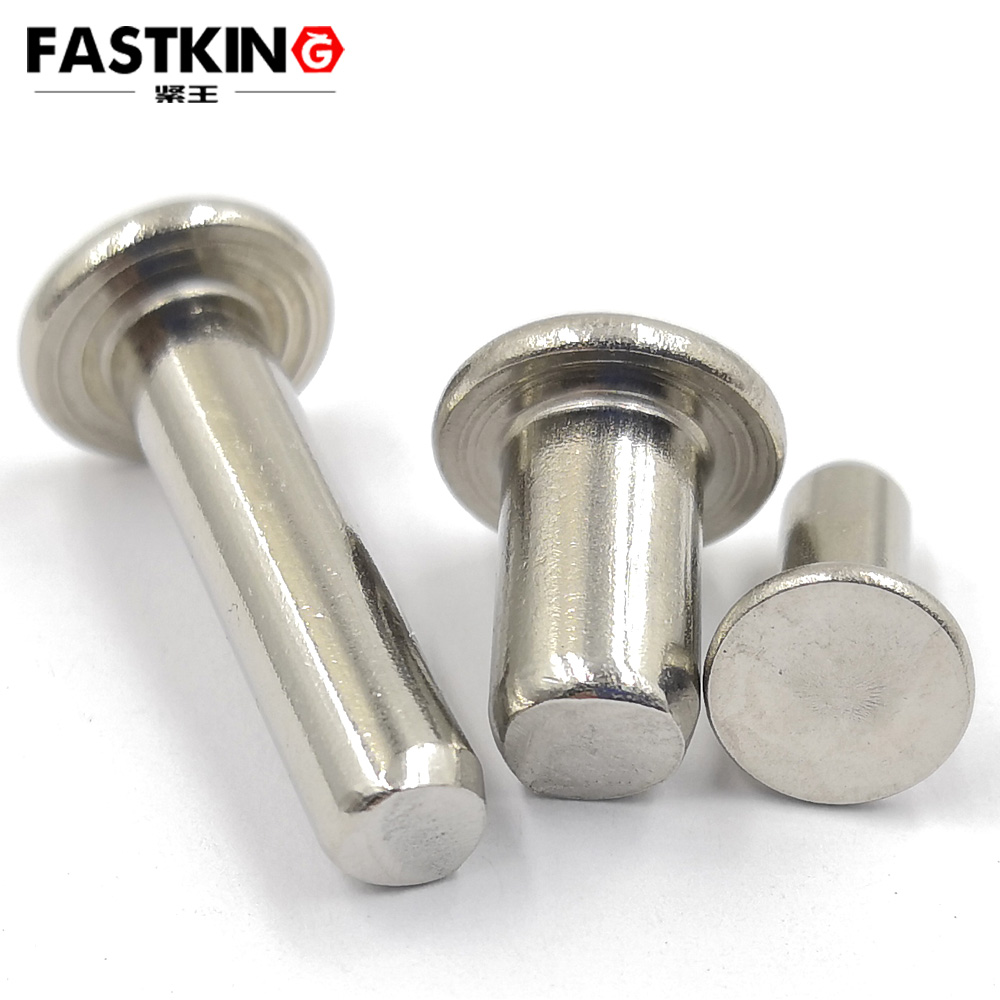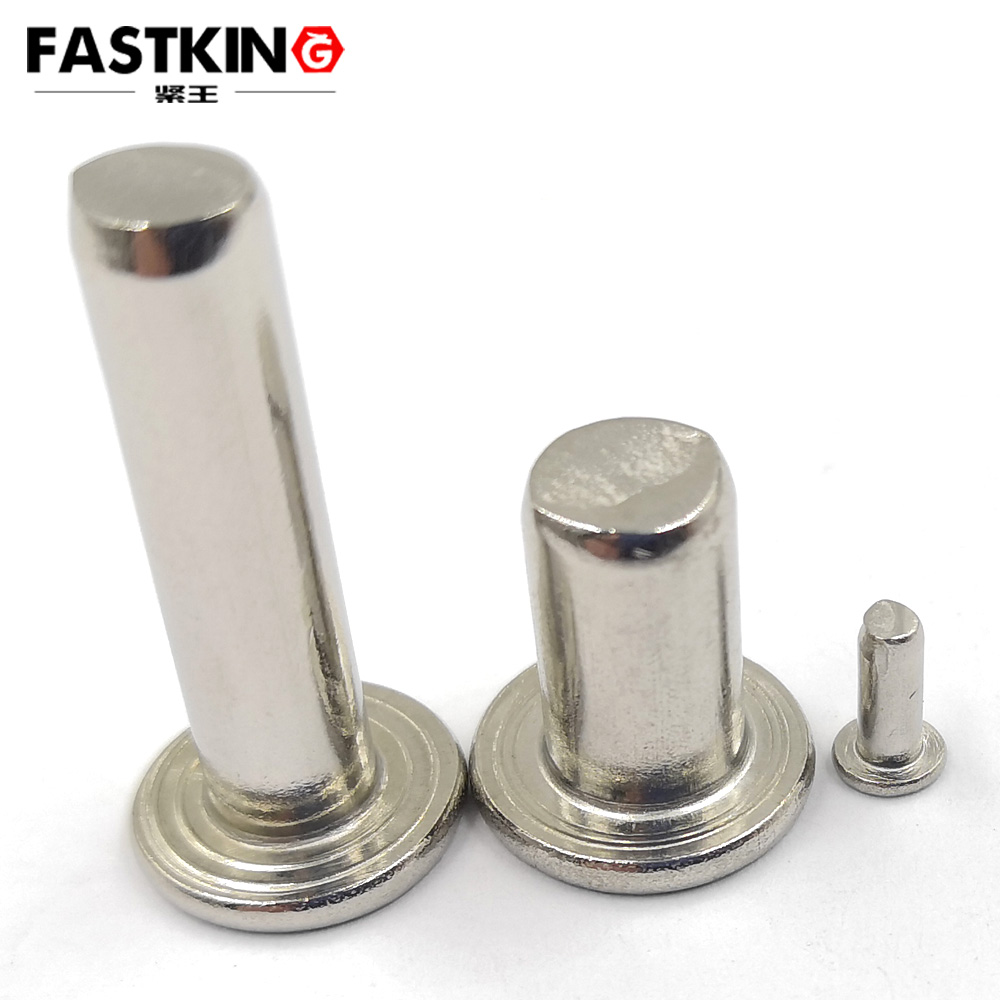Flat head solid rivets are a common type of mechanical fastener widely used in various industrial fields. They consist of a head and a shank, with the head designed to be flat and the shank being solid. The primary function of flat head solid rivets is to securely join two or more workpieces through mechanical deformation. Their characteristics include easy installation, high connection strength, and excellent vibration resistance, making them suitable for connecting a variety of materials and structures.

II. Working Principle of Flat Head Solid Rivets
The working principle of flat head solid rivets is based on plastic deformation and mechanical locking. The specific steps are as follows:
Pre-Drilling: Drill holes in the workpieces to be joined that match the diameter of the rivet. The hole diameter should be slightly larger than the rivet diameter to ensure the rivet can be inserted smoothly.
Inserting the Rivet: Insert the flat head solid rivet into the pre-drilled hole, ensuring the rivet head is flush with the workpiece surface.
Riveting Process: Apply pressure to the tail end of the rivet using a riveting tool (such as a rivet gun) to cause plastic deformation. The tail end of the rivet expands under pressure, forming a new head that tightly clamps the workpieces together.
Completion of Connection: After riveting, the head and tail of the rivet work together to form a stable mechanical lock, ensuring a strong and durable connection.
III. Applications of Flat Head Solid Rivets
Due to their unique structure and performance, flat head solid rivets are widely used in several fields, including:
Aerospace: In the aerospace industry, flat head solid rivets are used to connect critical components such as aircraft fuselages, wings, and engines. Their high strength and vibration resistance ensure the safety and reliability of aircraft.

Automotive Manufacturing: In automotive manufacturing, flat head solid rivets are used to connect body structures, chassis, and engines. Their easy installation and strong connections improve production efficiency and safety.
Electronics and Electrical Appliances: In the electronics industry, flat head solid rivets are used to connect circuit boards, heat sinks, and casings. Their compact size and reliable performance meet the high-precision requirements of electronic devices.
Construction Industry: In construction, flat head solid rivets are used to connect steel structures, curtain walls, and roofs. Their weather resistance and corrosion resistance ensure the long-term stability of buildings.
Machinery and Equipment: In machinery manufacturing, flat head solid rivets are used to connect various mechanical components such as gears, bearings, and brackets. Their high strength and wear resistance enhance the lifespan and reliability of machinery.
IV. Advantages of Flat Head Solid Rivets
High Strength: Flat head solid rivets are made from high-strength materials, enabling them to withstand significant tensile and shear forces, ensuring a secure connection.
Vibration Resistance: Riveted flat head solid rivets exhibit excellent vibration resistance, making them suitable for connections in vibrating environments.

Easy Installation: The installation process for flat head solid rivets is simple and quick, requiring no complex equipment or processes, thereby improving production efficiency.
Wide Applicability: Flat head solid rivets are suitable for connecting a variety of materials and structures, offering broad application prospects.
V. Conclusion
As an important mechanical fastener, flat head solid rivets are widely used in aerospace, automotive manufacturing, electronics, construction, and machinery due to their high strength, vibration resistance, and ease of installation. With the continuous development of industrial technology, the performance and application scope of flat head solid rivets will further expand, providing more reliable solutions for the connection needs of various industries.
